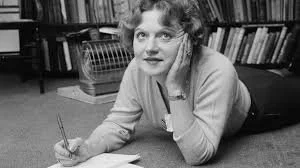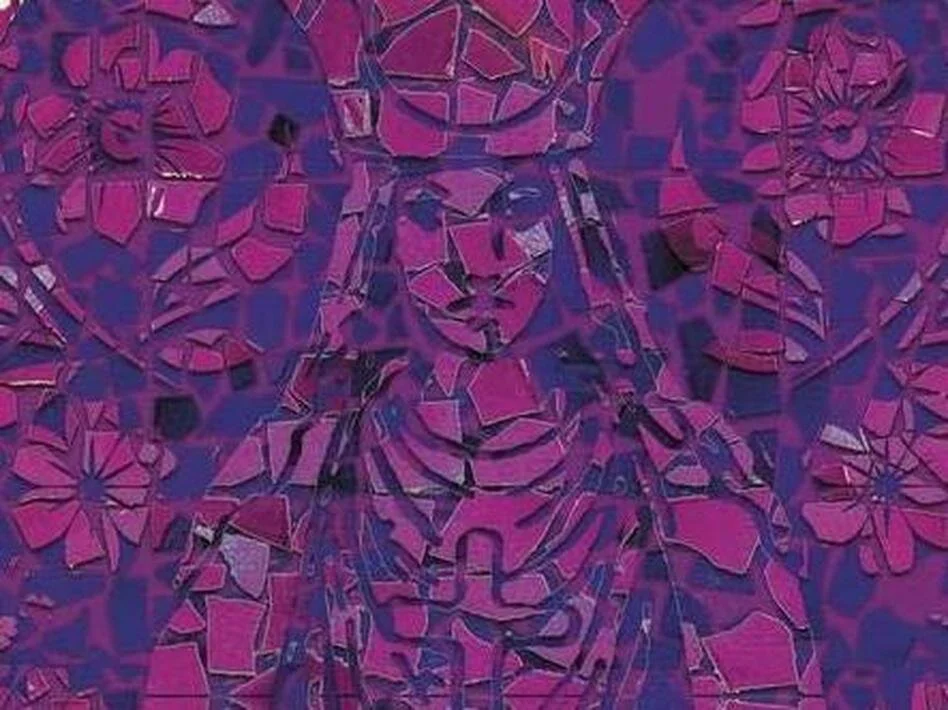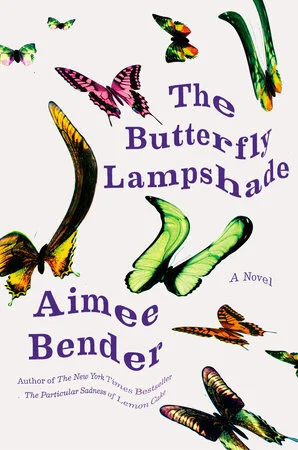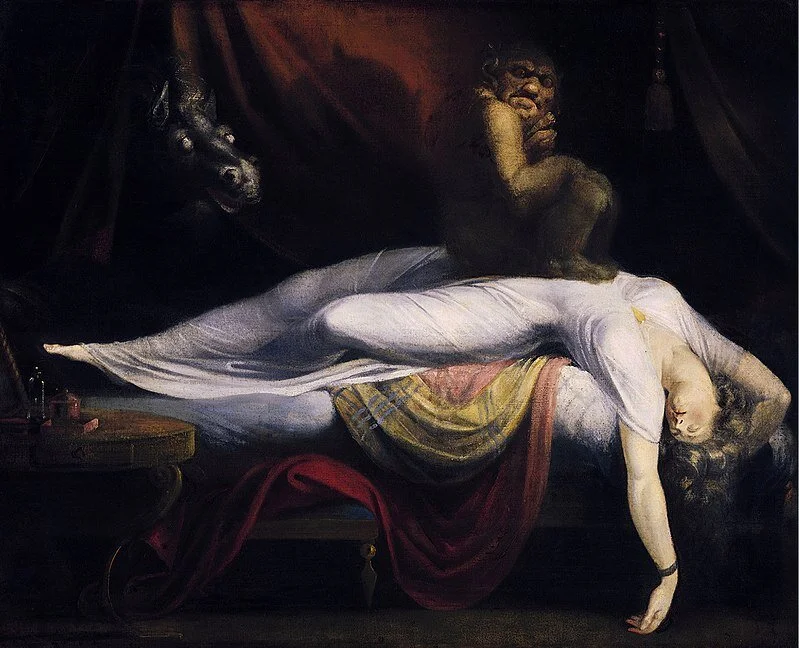Above Us Only Sky is a remarkable book. Prudence Vilkas, the sixteen-year-old protagonist, was born with wings in 1973 Nashville. The doctors said they were a birth defect and her wings were surgically removed leaving small scars on her shoulders. But the ghost of those wings remain, influencing the course of her life and connecting her with generations of winged Vilkas women. Jessa Crispin, who blogs at Bookslut, wrote a perfect description of what author Michele Young-Stone has accomplished with this book:
"Young-Stone beautifully balances historical facts of Lithuania and the human tragedy of the Holocaust with elements of quirk and magical realism. This might seem unlikely and difficult—a Holocaust book that includes women with wings, boys with psychic visions and a photographer who doesn't grow old—but it all works because the magical elements don't seem so impossible under this author's masterful hand. If we live in a world where 11 million people were exterminated, chambers created for the act of mass murder, graves dug by the very men who were to inhabit them, babies dropped out of train cars by their mothers so that they would not have to face the death camps—can we not also accept that we live in a world where there are women who are born with wings? Does one really sound more impossible than the other? If we can believe the worst, maybe, at least for the course of a novel, we can also believe that some people are birds, just waiting to fly home." — Jessa Crispin
CS Peterson and Michele Young-Stone sat down to talk about winged women, historic horror, transcendence, the craft of writing and sources of creative inspiration.
CSP: The first thing I want to ask is what fascinated you about Lithuania? Do you have a personal connection to that history?
MYS: In high school I knew a man named Valys. This was in the 80s, before the fall of the Berlin wall. He lived in a run down apartment and his son and I would go over there to hang out. He was Lithuanian and he would always talk about how he could never go home. He told how he had been taken in by a German family during WWII. His mother had already fled the Stalinist Russians who were executing educated Lithuanians. I also grew up with an older German woman we called Mac. Her family had suffered at the hands of Stalin as well. The characters of Ingeborg and the Old Man are loosely based on them. I had always taught The Diary of Anne Frank as an eighth grade English teacher. When I was pregnant with my son, Valys and Mac both passed away. When my son was born, I became a little obsessed with the holocaust and all the terrible things that happened. It haunted me—the idea that people would murder mothers, babies and children. I got interested in looking at what happened in Russia. The story of all these people who had been killed had not been told. No one had ever been tried for the crimes, no one had ever been held accountable. I didn’t really know what I was doing at the beginning exactly, but I think that is where the interest came from for finding out and telling a different part of the story of WWII. I recently met a man who was 85 and lived in Lithuania when the country was being passed back and forth between the Russians and the Germans. He said they didn’t know where to go or what to do. They were a teeny tiny country trapped between two monolithic evils. He said he saw his neighbors, anybody who was educated, taken away. His family were farmers, never been to university, so they left him alone.
CSP: There’s definitely a sense in the novel of no safe place. There are moments of brutal individual violence. The constant threats of physical and cultural genocide hang over the lives of almost every character. Yet your book is ultimately uplifting. How did you approach writing this material?
The white stork, the symbol of Lithuania, photo by Krzysztof Kin.
MYS: My natural tendency when I write is to go to dark places. There is light, I just have to find it. When I first wrote the scene in the bedroom where the Old Man’s sisters are murdered, I wrote it very "in your face." Brutally descriptive. It was just too close, too hard. So I got the idea of the shawl as something being in front of Dina’s face so she has this gauze barrier between her and the murder and rape of her sisters. She is the witness, the survivor who tells the story. But the shawl gives her a little distance. I was fascinated by the idea of Freddie, the Old Man’s son being an optimist, not wanting to be bound by the history of murder and genocide. So I had him look at the picture of his father’s family and romanticize everything. He would imagine the train car with the women in it toppling down the hill and them emerging as birds in a frozen landscape. For his character it was just better, easier to swallow than the reality. I’m a writer who likes to play with magical realism and investigate it. I think it can be a way for writers and readers to go together to dark places but still have the sensibility of other-worldliness, faith and humanity and God. There’s somebody here to hold your hand.
CSP: You're not abandoned.
MYS: Yes.You’re not abandoned. You’re looking through a shawl, you have that boy who could be a bear and you have that the bird that’s coming home to the giant nest that could be the spirit of one who was taken away.
CSP: How did you discover that some women in this family have wings? Is it something you started out to write or did winged women appear in the process?
MYS: I had an image of Prudence, my main character, as a sixteen-year-old girl getting on a bus with wings that she had built out of craft emporium feathers and glue. She was taking them to her art class to show them that this is who she really was supposed to be. That she should be with the birds and she was supposed to be able to fly. It feels like I wrote the scene a million times and then eventually I cut it. But that is the root of where the wings came from. As I wrote, it developed from there and I got the idea that wings are part of her heritage, her birthright. I’m not an outliner. I never know what is going to happen. My agent and editor say it’s a shame I have to write a thousand pages to get to the book, but I can’t help it. Just how it happens! It’s like visual art for me. I put down some paint, scrape some off here, put another layer down there. I feel like my writing is at the highest level when I sort of give it up and am really present in the scene with my characters.
CSP: Artistic and musical creativity appear in your novel as intense personal responses that are not always understood by others. Individual creativity complicates personal relationships—Freddie's weeping over John Lennon's music ends his marriage, Wheaton is falsely accused of plagiarism and disappears, the photographer is so transformed by photographing Daina's visitation by St. Casimir that he stops aging. How do you personally experience creativity and inspiration?
Hana Brady hid art created by the children of the Theresienstadt concentration camp in suitcases before she was deported. The art was discovered years later.
MYS: One thing I do when I’m writing is I make visual art as well. For the novel that I’m working on right now, when I wrote the first drafts of it, I ended up painting and doing mixed media of some of the scenes before writing them—it comes out in all these different ways. I think of art as being a form of salvation. When I was doing research for my first book I found out about children’s art from the concentration camp Theresienstadt. They drew the most beautiful artwork despite being in horrible situations where people were confined, starving to death and dying. Anne Frank kept that diary. That was what kept her sane. I think that for a lot of us art, whether it is music or visual art or singing or sculpting or dancing, it's where people find God. If they can’t find God elsewhere they can find it within themselves and within their art. It is important to me and a constant theme in everything that I write.
CSP: You have a talent for writing transcendent scenes that feel natural. In much speculative fiction the hero has a gift that makes them more than human. The heroes in your writing remain ordinary people in an extraordinary moments. Yet despite their everyday humanity, these moments ripple out and affect everything that follows.
MYS: I think that it depends on your perception of the world. If you open up to seeing miraculous things then that is a possibility. So when I write I make sure that I’m very present in those scenes, underwater with the character or in the prison cell with them. I want to give the reader the choice of believing that the character is hallucinating or engaged in wishful thinking or that this really is happening. I like to leave that up to the reader to believe what they want to believe, to present it in such a way that they have that choice. For the photographer, it was really important for me to give him his own voice. To show that the Russian people were the first victims of Stalin. It was important for me to express that as dark as this man's life was, that once he witnessed this woman and her wings the experience would give him faith that would resound. That he would spread that faith and that joy regardless of what negative things had happened in his life. I’m a firm believer in existential thought as being a good form of therapy in terms of you’re always in the process of becoming. So no matter what had happened with his father and no matter what had happened to him as a child it is never too late for there to be a turning point. For him to be open to seeing the beauty in life. Everything is about perception and how you’re willing to see the world.
CSP: And that’s what changed, his ability to see beauty.
MYS: Yes. It was seeing her, knowing that there were such miraculous things, and then looking for that everywhere, all the time.
CSP: In the publishing world there is often an attempt to draw firm lines between literary fiction and genre or speculative fiction that have these kinds of magical elements that are integral to the plot. The reason given is usually marketing to specific and distinct audiences. Above Us Only Sky defies simple categorization. Does this bother you?
Wings! Photo by Toby Hudson.
MYS: It doesn’t really bother me. I don’t feel as if the lines are definitive. People always ask me "What kind of books do you write?" and I always say literary fiction because I went to an MFA program. I read The Book Thief and someone then told me that it was YA fiction. I would never have defined that book so narrowly. My book could fall under YA fiction if having a teen protagonist is the criteria. I find that I’m drawn to writing novels where the main character has the big pivotal experience at sixteen but not because I’m writing exclusively for teens. For me adolescence is a hugely influential part of human life. As we get older the things that happen to us at that age ripple out into who we become as we get older. My book could be sold as historical fiction, literary fiction, magical realism, young-adult. I figure the more hats they can put on my work the better. More people will read it.
CSP: So as opposed to putting your book in one section in the book store it would have to be in five—and how could that be bad!
MYS: Exactly! I’m actually working on something now that would also fit in the LGBTQ section of the bookstore in addition to historical fiction and magical realism. The labels don't bother me. I guess people need labels but I don’t quite understand it.
CSP: You're a graduate of the Virginia Commonwealth University MFA program, and you have two books out now. Has your understanding of the craft of writing changed in moving from the world of academic literary writing to the "real" world of publishing?
MYS: Recently I’ve been thinking about the rules of good writing that we learn in MFA programs. You always hear "show don’t tell" for example. But writing is more nuanced than following a set of rules. In the past I would take "show don’t tell" to heart to such an extent that my work was inaccessible, overly literary. I think that the difference between what an MFA program expects and what an editor and a reader expect is often very far apart. If you want to communicate to real readers it’s O.K. to tell the reader certain things. You never want to talk down to your reader but at the same time you don’t want to intentionally write things that no one can hold onto. That’s been a big lesson for me as a writer finding that balance between rules and instincts. The writing needs to serve the story.
CSP: Thank you so much for agreeing to do this interview. It has been fun talking with you and a first for Fiction Unbound!
MYS: Thank you for asking. It has been a great pleasure!




































Cadwell Turnbull's new novel — the first in a trilogy — imagines the hard, uncertain work of a fantastical justice.